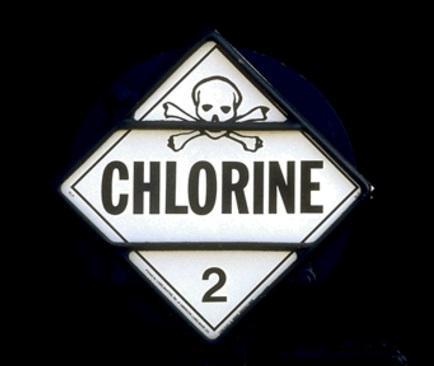Chlorine is a chemical commonly used in a variety of industrial and commercial settings, including swimming pools, water treatment facilities, and pulp and paper mills. It is a powerful disinfectant and is used to kill harmful microorganisms in water. However, it can also be a dangerous substance if not handled properly. Surveys and studies indicate that there are thousands of chlorine-related accidents and approximately 5 to 10 chlorine-related deaths per year in the United States. While these numbers seem so low, the widespread use of Chlorine in our lives suggests we cannot disregard this danger. Chlorine is one of the most widely used industrial chemicals in the world, with approximately 13 million tons produced annually in the U.S., and 92.3 million metric tons worldwide.
As important as it is to understand the potential dangers of chlorine, it is also important to know how to prevent and respond to accidents involving this chemical. In the following article, we will delve deeper into the statistics surrounding chlorine accidents and explore measures that can be taken to minimize the risk of injury or death.
- Always wear protective gear when handling chlorine. This includes gloves, goggles, and a face shield. Chlorine is a powerful chemical that can cause serious health problems if not handled properly. When working with chlorine, it is important to wear protective gear to prevent skin and eye irritation. Gloves, goggles, and a face shield are essential to protect the hands, eyes, and face from contact with chlorine. Additionally, it’s important to know that chlorine can also be harmful if ingested or inhaled. It’s important to use personal protective equipment to minimize the risk of exposure.
- Store chlorine in a cool, dry place, away from heat sources and other chemicals. Storing chlorine in the right way is crucial for safety. Chlorine should be stored in a cool, dry place away from heat sources and other chemicals. This is because chlorine can react with other chemicals, creating dangerous gases. Additionally, chlorine should be stored in a well-ventilated area to minimize the risk of exposure. It’s important to be aware of the specific storage guidelines for the type and quantity of chlorine you are handling, and to follow them carefully.
- Use chlorine in a well-ventilated area. Chlorine gas can be toxic if inhaled in large quantities. Using chlorine in a well-ventilated area can help to prevent the build-up of chlorine gas in enclosed spaces. This is particularly important when using chlorine in large quantities or for prolonged periods of time. Employers should have a proper ventilation system in place to ensure that chlorine gas is properly ventilated and does not build up to dangerous levels.
- Never mix chlorine with other chemicals, including acids, ammonia, and other cleaning agents. Mixing chlorine with other chemicals can create dangerous gases that can be harmful to your health. It’s important to never mix chlorine with other chemicals, including acids, ammonia, and other cleaning agents. This includes not only during the mixing process but also during storage, as accidental mixing can still occur. It’s important to be aware of the specific hazards associated with the chemicals you are working with and to follow the guidelines for safe storage and handling.
- Use the right equipment when handling chlorine. Using the right equipment when handling chlorine is crucial for safety. This includes using a chemical-resistant container, such as a polyethylene container, and a chlorine-compatible pump. It’s also important to use equipment that is specifically designed for handling chlorine, such as chlorine-compatible hoses and seals. Using the right equipment can help to prevent accidents and leaks, and minimize the risk of exposure to chlorine.
- Be aware of the signs of chlorine exposure, including skin irritation, eye irritation, difficulty breathing, and coughing. It’s important to be aware of the signs of chlorine exposure, as it can be harmful if ingested or inhaled. Signs of chlorine exposure include skin irritation, eye irritation, difficulty breathing, and coughing. If you experience any of these symptoms, seek medical attention immediately. Additionally, if you see someone experiencing these symptoms, it’s important to get them medical attention as soon as possible.
- Keep an emergency eye wash station and a shower nearby in case of accidental exposure. Accidents can happen and it’s important to be prepared for them. An emergency eye wash station and a shower should be kept nearby in case of accidental exposure to chlorine. This can help to quickly flush chlorine from the eyes or skin, reducing the risk of injury or illness. It’s important to ensure that emergency equipment is easily accessible and in good working condition. Regularly test and maintain emergency equipment to ensure that it is ready to use in case of an emergency.
- Train employees on the proper handling and storage of chlorine, as well as the emergency procedures in case of an accident. Proper training is essential for employees who work with chlorine. They should be trained on the proper handling and storage of chlorine, as well as the emergency procedures in case of an accident. This includes educating employees on the signs of exposure and how to properly use personal protective equipment. Employers should also provide training on the hazards associated with chlorine and the steps that should be taken to minimize the risk of exposure.
- Regularly check and maintain equipment and safety systems, including ventilation systems and emergency equipment such as eye wash stations and showers. Regular maintenance and inspections are essential to ensure that equipment and safety systems are working properly. Employers should check and maintain equipment and safety systems, including ventilation systems and emergency equipment such as eye wash stations and showers, on a regular basis. This includes testing emergency equipment to ensure that it is in good working condition and is ready to use in case of an emergency.
- Have a plan in place in case of an emergency, such as a spill or release of chlorine gas, and practice emergency procedures regularly. It’s important to have a plan in place in case of an emergency and to practice emergency procedures regularly. This includes notifying the appropriate emergency personnel and evacuating the area if necessary. Employers should also have a written emergency plan in place that outlines the procedures to be followed in case of an emergency. It’s also important to review and practice emergency procedures regularly with employees to ensure that everyone knows what to do in case of an emergency.
Chlorine is a powerful chemical that can be dangerous if not handled properly. By following these safety tips, you can minimize the risk of exposure and ensure that you and your employees are protected while working with this chemical. Remember to always wear protective gear, store chlorine in a safe place, use it in a well-ventilated area, and never mix it with other chemicals. Keep emergency equipment and emergency plans in place, and regularly train and educate employees on chlorine safety. By being aware of the hazards associated with chlorine and taking the necessary precautions, you can work safely and efficiently with this powerful chemical.










